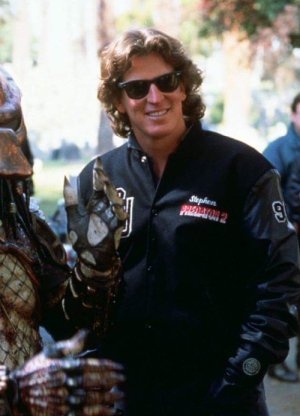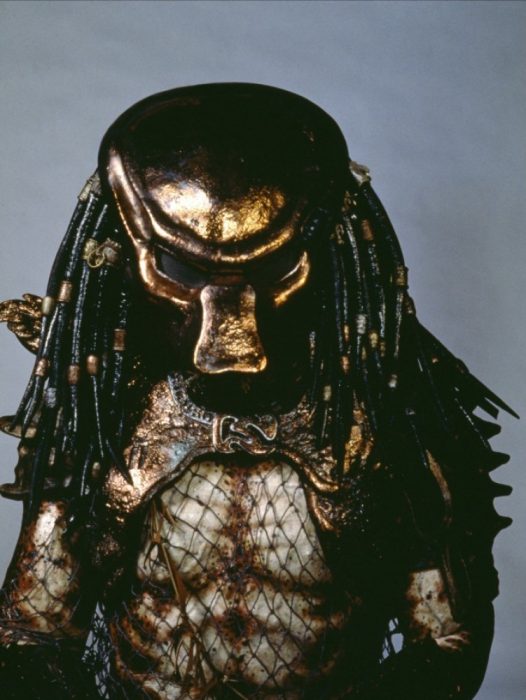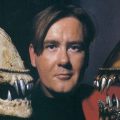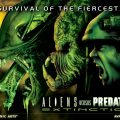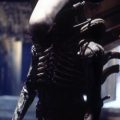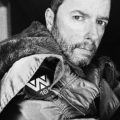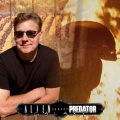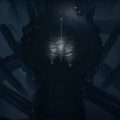Stephen Hopkins Interview
Posted by Darkness on January 8, 2021 (Updated: 22-Aug-2023)
Stephen Hopkins is best known in the community for directing Predator 2 in 1990. Prior to Predator 2, he directed Dangerous Game and Nightmare on Elm Street 5. We sat down and had a chat with Stephen Hopkins for Episode #121 of the Alien vs. Predator Galaxy Podcast in January 2021. We spoke to him about how he got into filmmaking in the first place and his experiences in filming Predator 2. You can listen to the interview below or read on for a transcription of the interview.
AJ: First thing’s first, Stephen. Thank you for taking the time out of your day to come and talk to a couple of big Predator fans on the internet. But before we start to actually dig into Predator 2, I was hoping you could tell our readers a little about Stephen Hopkins outside of Predator 2. Can you tell us a little about your journey as a filmmaker?
I started off as a comic book artist actually, as a kid. It was before I even went to art school. I was doing splash pages for Marvel UK. Then various underground comics and album covers and for punk bands and stuff like that. It was kind of a lonely job. If I want to go way back I was born in Jamaica and brought up in America and arrived in England in the 60’s. I discovered that England had lots of white people and no beaches and then went to school there.
Growing up…we travelled around the States for a long time in a car so I’d grown up reading comic books. So I was a comic book freak. And I’ve got a gigantic collection now and boxes all over the place. So, I was a big comic book fan and that didn’t really work out. I was too young. I wasn’t really good enough I don’t think or wasn’t applied enough and it was a lonely job. So I just accidentally got a job doing storyboards for rock videos in the very early 80’s. I think Duran Duran was the first video I worked on and then became a designer very quickly, very young. Worked with some of these great rock video directors like Russell Mulcahy and David Mallett and Brian Grant, and Steve Barron occasionally.
Then I just started designing big videos and big commercials. And in those days people couldn’t really tell what you had or hadn’t done. So, I just lied a lot and started directing lots of rock videos at the age of like 23, 24. Moved to New York, started doing stuff there and I was supposed to go to Australia to do an Elton John video. I got there, just doing the sets for them, like sad songs and all these big videos. Then he decided to get married to a woman which surprised all of us.
So, I got stuck there and while I got stuck there waiting for the videos to happen, I started directing a lot of rock videos there. When I was there, I did lots of rock videos and commercials. A big musical theatre, a thing called Rasputin which was enormous. Then my friend Russell Mulcahy invited me to come and do the second unit [on Highlander]. He actually wanted me first of all to design the Highlander and I thought “I’m too young. I don’t know what I’m doing. I’m just gonna be a disaster” so I turned it down. Then he asked me to do second unit which was very exciting.
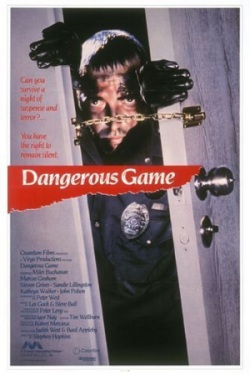
Dangerous Game
So, I went to England. I stayed in Australia and went back to England and went to Scotland and New York and London. That was my first film experience which was just a fantastic experience. I ended up having Sean Connery for a bunch of days and he publicly humiliated me on set every day because I was so stupid. I shot loads of great stuff and I knew Russell’s style very well so I was copying what he was doing. Then because of that actually – that I directed lots of big music concerts for Mick Jagger and different people around the world – then directed a tiny film in Australia called Dangerous Game which was seen in Cannes by a bunch of Hollywood people.
I got invited to Hollywood and I was gonna do Pet Cemetery but it didn’t happen. I ended up doing Nightmare on Elm Street 5: The Dream Child which was quite a…it was during a writer’s strike. So we sort of had to make it up as we went and I got that job on Valentine’s Day. It had to be out in August and so I was actually shooting a few days before it was in the cinema. During that, Joel Silver at the time, was just picking off Nightmare on Elm Street directors I think and grabbing them for stuff. Dangerous Game was quite a big sort of stylish action film on a small budget so he just came to me with this [Predator 2]. I thought this is incredibly exciting so I started working on Predator 2 before I finished Nightmare 5 and we kind of overlapped. So that’s the very short version of all of that.
AJ: Did Joel see Dangerous Game?
I think he or one of his people had seen it. I think he had seen it. Joel’s like a computer. In those days he was such a ferocious filmmaker and he could remember everything that everyone had ever done. He had this computer mind for stuff and obviously style was something that he enjoyed sometimes more than substance I think. Larry Gordon and Joel both produced Predator 2 and it was for Fox and it was Rupert Murdoch’s first film at Fox when they took over. So we’re in the middle of a transition and I think he just liked the way my stuff looked. That was enough I think and I was cheap. Actually, thanks to him, less cheap after that and then we didn’t have a huge budget for Predator 2. What a great opportunity and I was allowed to get Larry Paul on and my mate Peter Levy from Australia so it was a riot.
Aaron: It still ended up being more expensive than the first film?
I don’t know how much the first film cost actually. I think our film cost $30 million which is a lot of money but not a massive amount of money for a huge science fiction action film. The film we made was all before the digital time so everything was a film optical. It was quite an unwieldy thing to make. It wasn’t like you could go and put that creature in later. That didn’t happen in those days. It had to be done really properly because it was all film opticals. We shot a chunk of it on 70mm actually because as the opticals were constantly changed, it didn’t degrade too much and those cameras were that big.
AJ: Speaking of the first film, one of our traditions on the show that we love to ask our guests, especially the ones such as yourself who have shaped the franchise in such significant ways, is about the first time they actually encountered the Predator. So, do you remember the first time you actually saw the original 1987 film and what were your thoughts about it?
I’m gonna be a terrible person and say I saw it when I got the job because I hadn’t caught up to it at the time. I’d been living in Australia and I’d been working flat out and had never seen it. I saw it and then I met John McTiernan who was at Fox working. Obviously, he did Die Hard after that. And I had a long chat with him about it and he was really helpful. He’s a very serious guy is John. So, Predator to him was not like a camp sort of horror experience, it was a very thematic… he’s a great director and if you watch his work from the director’s point of view anyway, you can see that he has so much skill.
There’s a lot of stuff happens in one shot or it’s very carefully thought out but it was obvious that the first Predator film was really so well cast. The idea was so terrific and you never saw the Predator until the end. One of the reasons Joel had explained that the Predator wasn’t really there was they didn’t really know what it was until late into filming. At one point it was Claude Van Damme on stilts and then that was redesigned by Stan into all these different amalgamations of things into a guy, into Kevin, in an amazing suit.
But the suit in the first film, you hardly ever saw it as it’s really well-lit. The second film obviously we had to see a lot of this creature and you’d already seen it. So, there’s no huge surprise so Stan had really upgraded the Predator. When I came along and then we continued to upgrade it even more knowing that we were going to have close-ups all over the place. He was going to be a main character in it.
Aaron: Going into the development of Predator 2 then. So, you start the film, it was already in like your public consciousness. For nerds like us though there’s so much outside of the movies. There’s what they call the expanded universe, all the comics and stuff like that. Now when you were working on Predator 2, the franchise didn’t have that sprawling expanded universe that it does now.
All those books on that shelf behind me a load of those are Predator books. You didn’t have that. You had a single comic, the very first comic from Dark Horse and Mark Verheiden and we’ve had the pleasure of speaking to Mark in the past and he told us that he’d at least met with the Thomas brothers to discuss his series and where he was going with it. The brothers seem to have taken some inspiration from that first issue so I was curious as to if you personally… because you were so involved in the scripting process as well… were you aware of the comic and did that directly inspire any of the things that you brought to Predator 2?
I thought the comic didn’t come… I thought it came out concurrently when we were working on the film, I think.
AJ: The story goes as Mark presents it is that Joel reached out to him. It was a four-issue series and the first issue was out and Joel Silver reached out to him or one of his representatives and says “Hey we really like your story, we want to see where it’s going in the rest of the issues and can we meet with you?” So apparently Joel Silver sent some representatives and the Thomas brothers to talk to Mark. That first issue is very similar to the backbone of Predator 2 in regards to what…
In New York? Oh, I do remember that now. I remember it yes. I remember seeing the drawings of that and I’m a big fan of Mark’s and we worked together since Tails from the Crypt and all sorts of stuff. Yeah, I remember that now and I couldn’t remember if that was some storyboards from somebody else. But it was the actual comic book and then I remember being slightly involved in the Dark Horse version with Ross Andrew drawing like a comic book based on the movie.
Aaron: Was that any particular inspiration? Was there anything in there that you saw that was pulled for Predator 2?
I remember seeing the drawings now but because we were doing it in L.A., we were much more focused on what L.A. was going to be like in the crazy future than it was. We thought it was going to be a very hot dusty anarchic world which is certainly true about Los Angeles right now. Looking for style, we sort of went into Latino Cuban retro style of the future. Where the police station was guarded and there were riots and gangs. So, I think the gangs thing was a basis from the comic book idea think but being in L.A., it didn’t have that sort of New York feel. I did some drawings actually and I think in the film too when we wanted to put the Predator on the top of the Eastern building in L.A., there was a sort of New York homage there. I always saw him hovering above, like in all good superhero things, but in 1989, you couldn’t really leap from building to building in L.A..
Aaron: So, you mentioned Joel earlier, how he liked your style in particular. So when he reached out to you, do you remember any more about those sorts of like early conversations? How did he pitch this project to you and what was your immediate reactions to what you could bring to this?
Well Joel is just a very direct person and he just said “We wanted something mind-blowing and huge and stylish” and took bits from my first film – “I loved that bit” and it really didn’t take very long. In those days it was interesting. When you’d start a film you’d often have a conversation with a head of a studio or a producer as big as Joel. You’d go okay and you shake hands and off you go and there was no real… the script was not completely finished so I was sent like a 60-page mostly finished draft. We just come out of a writer’s strike and then we were about to go into a new writer’s strike.
So we had to do a lot of… and the Thomas brothers obviously knew the stuff really well and worked with Joel a lot and knew this character better than anyone else. Of course originally it was Arnold’s character with Lieutenant Harrigan in the original version. It started off on a golf course with this guy with white hair playing golf and a helicopter lands. These guys come out and the guy with the white hair turns around it’s Arnold with a scar across his face and they say “He’s back” and off you go and it was Arnold and Danny together going through this at the time but then that didn’t work out.
I think mainly because Jim Cameron who I knew pretty well then just didn’t want Arnold to do Predator 2 and then Terminator 2. He sort of gave him a choice and how can you argue with that choice. Terminator 2 is one of the greatest science fiction films ever made so I think Arnold really knew that he couldn’t do both at the same time because it didn’t feel right.
